I spun up a Vue 2 app using the vue cli. When I type an address I am not seeing any suggestions populate from the dropdown. In the newtwork tab, I see AutocompletionService.GetPredictions call firing and there are no errors upon page loading.

From my previous question, stackoverflow, I was prompted to use the google maps loader,npm, which I did.
<template>
<div id="app">
<img alt="Vue logo" src="./assets/logo.png" />
<!-- <HelloWorld msg="Welcome to Your Vue.js App" /> -->
<input
id="detailedLocation"
ref="autocomplete"
type="text"
v-model="address"
@input="locatorInfo"
/>
<ul>
<li v-for="(result, i) in searchResults" :key="i">
{{ result }} // list of all places
</li>
</ul>
</div>
</template>
<script>
import { Loader } from "@googlemaps/js-api-loader";
const loader = new Loader({
apiKey: "AIzaSyCcm...........",
version: "weekly",
libraries: ["places", "map"],
});
export default {
name: "App",
data() {
return {
info: null,
searchResults: [],
address: "",
};
},
async mounted() {
let location;
const center = { lat: 40.84498856765032, lng: -73.71060855293794 };
// Create a bounding box with sides ~10km away from the center point
const defaultBounds = {
north: center.lat + 0.1,
south: center.lat - 0.1,
east: center.lng + 0.1,
west: center.lng - 0.1,
};
const input = document.getElementById("detailedLocation");
const options = {
types: ["address"], // the error was type: cities
bounds: defaultBounds,
fields: ["place_id", "geometry", "name", "address_components"],
};
loader
.load()
.then((google) => {
location = new google.maps.places.Autocomplete(input, options);
location.addListener(
// document.getElementById("detailedLocation"),
"place_changed",
onPlaceChanged
);
console.log(location);
})
.catch((e) => {
console.log(e);
// do something
});
const onPlaceChanged = () => {
const place = location.getPlace();
console.log(location, place, "LINE 79");
if (!place.geometry) {
document.getElementById("detailedLocation").placeholder =
"Enter a place";
} else {
document.getElementById("detailedLocation").innerHTML =
place.formatted_address;
console.log(place.formatted_address, "line 60");
}
};
},
methods: {
locatorInfo() {
if (navigator.geolocation) {
navigator.geolocation.getCurrentPosition((position) => {
console.log(position.coords.latitude, position.coords.longitude);
});
}
},
printData() {
this.displaySuggestions();
console.log(this.$refs["autocomplete"].value);
},
displaySuggestions(predictions, status) {
if (status !== window.google.maps.places.PlacesServiceStatus.OK) {
this.searchResults = [];
return;
}
this.searchResults = predictions.map(
(prediction) => prediction.description
);
},
},
};
</script>
When an address is entered and submitted, there is no error either. I'm not sure what I am doing incorrectly. I followed the google developers video, google places autocomplete widget, and closely checked the docs, AutocompleteService Class. As mentioned above the network call is to AutocompleteService class instead of just Autocomplete (since this is a widget). My loader is calling a constructor for Autocomplete. Why is this? How do I wire this up to work?
EDIT
I added a codesandbox and modified the code from defining onPlaceChanged, to an anonymous function as in the docs, docs example